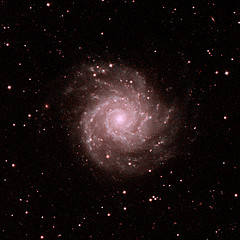 Hey, great news for SETI fans! The latest work on the Drake equation suggests that we can all get our Fox Mulder on:
Hey, great news for SETI fans! The latest work on the Drake equation suggests that we can all get our Fox Mulder on:
The current research estimates that there are at least 361 intelligent civilisations in our Galaxy and possibly as many as 38,000.
Awesome! Wait, what?
Even with the higher of the two estimates, however, it is not very likely that contact could be established with alien worlds.
Ah. Bugger.
Of course, the Drake Equation is only as good as its input data, and much of that remains wildly speculative. But the above is the result of factoring in the sudden rash of exoplanet discoveries we’ve made in the last few years; according to Centauri Dreams, the little we’ve learned about them means we can simulate the potential parameters of their atmospheres in order to guess how statistically likely they are to harbour the potential for life. Even that’s mostly guesswork, though:
… in biological terms, we are even more up the creek, since we base our thinking on observations of a single biosphere, our own. To keep the number of free parameters to a minimum, Forgan works with “a biological version of the Copernican Principle,” the notion that our Terran biosphere is not special or unique, so that we can think about life on other worlds as sharing many of the same characteristic parameters.
So keep watching the skies, folks! And don’t forget the hypothesis of Futurismic‘s own Mac Tonnies, which suggests that what we think of as extraterrestrials may in fact be something much more local… [image by jimkster]
 Maverick mathematician Rudy Rucker is thinking about topics for his next novel, and
Maverick mathematician Rudy Rucker is thinking about topics for his next novel, and

 Mac Tonnies assures me that this is a true story; I’ve worked with him for a while now, and I’m inclined to believe him… though I suspect the truth in question may be more symbolic than literal. But you should make up your own mind after you read about Mac’s real-life alien encounter in this month’s Loving The Alien column.
Mac Tonnies assures me that this is a true story; I’ve worked with him for a while now, and I’m inclined to believe him… though I suspect the truth in question may be more symbolic than literal. But you should make up your own mind after you read about Mac’s real-life alien encounter in this month’s Loving The Alien column.